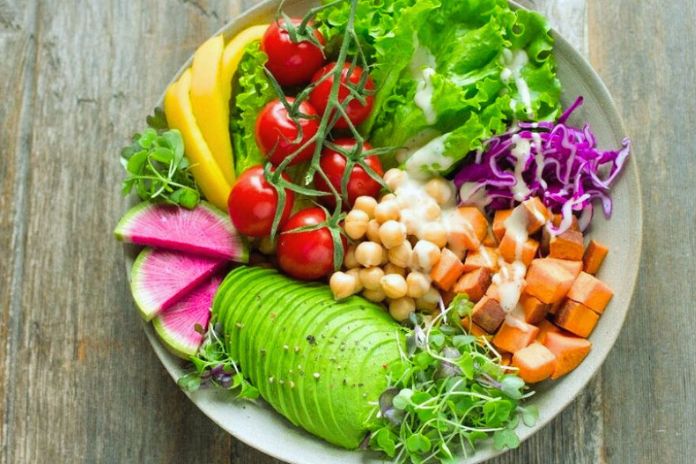Naked and raw. This is how the raw food trend wants food which, already in vogue for some years, has gradually diversified and is intertwined with the theories of vegan and vegetarian nutrition. At the base is the search for different flavors and the desire for a healthy diet. But is eating food without cooking good for you? The answer is not just one. Let’s see in which cases raw food (or “raw,” to put it in English) is the best choice and why. And when, on the other hand, it’s better to turn on the stove.
Raw Food: The Principles Of The Raw Diet
For those who follow raw food, which is a food style but also, in some respects, a philosophy of life, cooking food at more than 42/43 degrees is harmful because it causes the dispersion of some beneficial substances such as minerals, vitamins, and antioxidants. According to basic theories, cooking alters the body’s pH, favoring acidosis and, therefore, inflammatory diseases. On the contrary, eating raw food would preserve the level of some natural enzymes, essential for better assimilation of food.
According to raw foodist theories, raw foods remain “alive,” are metabolized better, and have a higher energy charge. Precisely, that “boost” of energy passing through the body would make it more resistant to disease, stronger, and, overall, better nourished. For this reason, avoiding cooking food would help prevent headaches, autoimmune disorders, and allergies and strengthen memory and the immune system.
How Raw Food Is Prepared
Preparing raw food requires a certain commitment and, paradoxically, time. Beyond the simple crudités of fresh fruit and vegetables, which must, in any case, be washed carefully to remove soil and impurities, raw food can be treated in various ways before being consumed.
It can be made liquid with the extractor (which does not create heat as with the centrifuge), pounded, dried, or marinated. All this makes it tastier without altering it. The vegetables (carrots, courgettes…) can also be cut into very thin spirals with a special tool and then proposed and served as an alternative, for example, to the usual spaghetti. Raw food can be worked wisely with excellent results: cheesecakes, lasagna, and delicious raw vegan meatballs.
Vegan Raw Food Or “Omnivore”?
Raw food has more than one face. We don’t always mean a “veg” diet when we talk about raw food. There is vegan or “plant-based “raw food, in which all foods of animal origin are excluded, vegetarian raw food, which can also admit raw eggs and unpasteurized dairy products; and omnivorous raw food, where raw meat and fish are included.
The Dangers Of Uncooked Animal Foods
Choosing omnivorous raw food is not advisable, especially if you want to eat raw meat regularly. Uncooked fish and meat can be responsible for many (even very serious) gastrointestinal poisonings.
If not properly killed at low temperatures, fish can cause the dangerous scombroid syndrome and contain parasites such as anisakids. Meat spoils easily and can transmit infections from pathogenic bacteria such as listeria and escherichia coli.
Even uncooked eggs are potentially dangerous, especially for salmonella infections, and, if consumed in excessive quantities, can also create malabsorption of some vitamins such as biotin.
Warning: marinating or prolonged immersion in vinegar or lemon, not the great disinfectant power often attributed to it, improves the taste of raw, but alone is not enough to make it safe.
Yes, To A Plant-Based Menu
The discourse of vegan raw food is different. Seasonal vegetables and fruits are rich in fiber, vitamins, and various beneficial phytochemical compounds, antioxidants, and anti-aging. Those who switch to raw food usually also lose a few kilos because vegan raw food, by limiting glycemic peaks and the excess of saturated fats of animal origin (especially from junk food and ready-to-eat and hyper-processed foods), can be a way to fight and naturally prevent type 2 diabetes (the one linked to lifestyles) and being overweight.
Moreover, seeds and dried fruit contain good fats with anti-inflammatory action, beneficial on silent inflammations and on metabolic and skin disorders: it is no coincidence that they are considered true “fighter food”. “
Raw Food, Food Hygiene, And Integration
In addition to hygiene, which in the case of raw food must be rigorous, those who follow a vegan raw food diet must also pay attention to some possible deficiencies.
Despite what you think, some phytochemical compounds are not depleted but, on the contrary, enhanced by cooking (obviously not reaching very high temperatures!). An example can be lycopene, contained, for example, in tomatoes, and beta-carotene typical of yellow-orange fruit and vegetables.
For this reason, it would be appropriate to include cooked foods from time to time, especially in winter: those recommended are tomato and vegetable sauces and pumpkin, broccoli, and carrot soups, rich in beneficial bioactive compounds.
Those who switch to vegan raw food must also consider that some foods become less digestible if they are not cooked, especially for those who do not have a perfectly healthy colon: gradualness and moderation in portions win. Finally, it is also necessary to foresee some periodic checks on the levels of vitamin D, iron, and vitamin B12, just like, more generally, for vegans. If the values drop too much, it is necessary to consider a targeted integration, even with “veg” supplements.
Also Read: What Are Foods Rich In Dietary Fiber?

